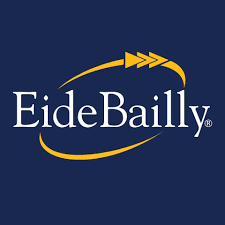McLellan: The first stage: Marketing during a community outbreak

There are so many unknowns that we are dealing with today in relation to COVID-19. But there is one certainty. This will pass, and we will move into a new normal. We aren’t going to just pick up where we left off before COVID-19. The truth is, like any other event of significance, this moment in time will change the way we do business, the way we interact. And it will, in some wtay, change each of us.
But there will be a time, just like after 9/11 and the ’07-’08 recession, when it will feel OK again, and we will go back to business with the same vengeance as before the pandemic.
There are three distinct stages we’ll experience on our way to a new normal, and in each phase we must think about marketing a little differently.
We are in the first stage, community outbreak. As we’ve all experienced in the last couple of weeks, we have moved into a homebound economy. For most people, they’re still experiencing a mix of disbelief and fear related to the virus. Some have cocooned in their homes, taking social distancing to an extreme. Others, on the opposite side of the spectrum, may be working from home, but they’re still socializing with neighbors on their driveway, going out shopping, and trying to cling to a pre-COVID-19 normal.
As your audiences grapple with accepting this situation, they are not particularly open or in a position to buy anything beyond essentials. Like Maslow’s Hierarchy of Needs, they’re focused on covering their basics. If you sell to consumers, they’re spending on food and supplies to keep their family safe and entertained. If you sell to businesses, they’re scrambling to figure out how to function with a 100% remote workforce and are worried about their own revenue challenges.
Both groups are hoarding cash out of fear because there are so many unknowns. Even if you offered them the best deal on the planet, they can’t hear you right now.
During this phase, there are two major marketing mistakes you can make. The first and most offensive is to keep selling. At best, you look tone-deaf to the situation, and at worst, you look greedy and uncaring. The second major mistake is if you go silent. In next week’s column, I’ll show you data on what happens to organizations that disappear from the marketplace during a financial downtown like the one that followed 9/11.
What we can and should do right now is move from selling to serving our community in any way we can. A great example of that here in Des Moines is Re/Max Precision. They’re distributing activity packets for five different grades (pre-K to third) free of charge, and the 200-plus families who have received the packets have been, as you can imagine, very thankful.
An ad agency in Bangor, Maine, Sutherland Weston, created a free guide of all the places and special times that seniors and people with compromised immune systems can shop in their town. Both are excellent examples of how you genuinely help and build your brand at the same time. There’s nothing wrong with doing both.
Beyond serving the needs of the community, which should be our first priority, businesses can and should still be communicating. Instead of selling, shift to educating and informing. Your audience isn’t in a position to buy right now, but that doesn’t mean you can’t help them today. For now, you can stay relevant and valuable to them by sharing what you know in a way that serves them right now.
Be of genuine service today. It’s the right thing to do. But it will also be the right way to market right now.










